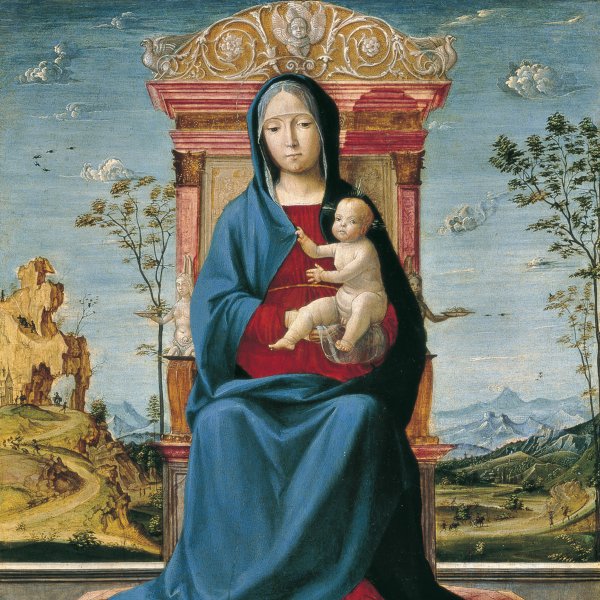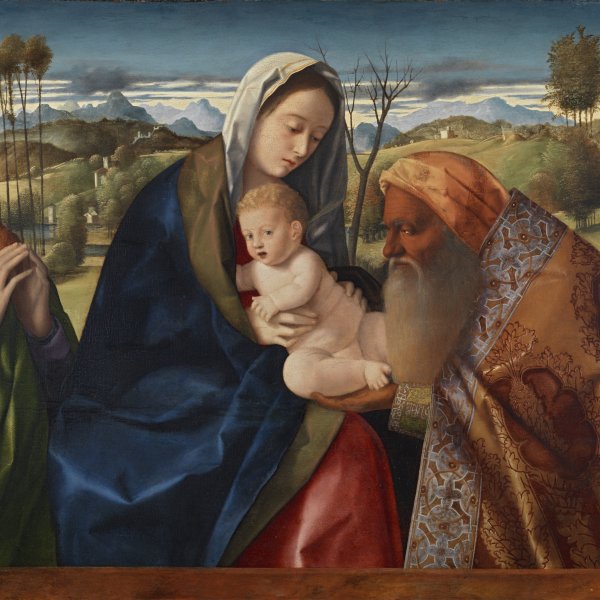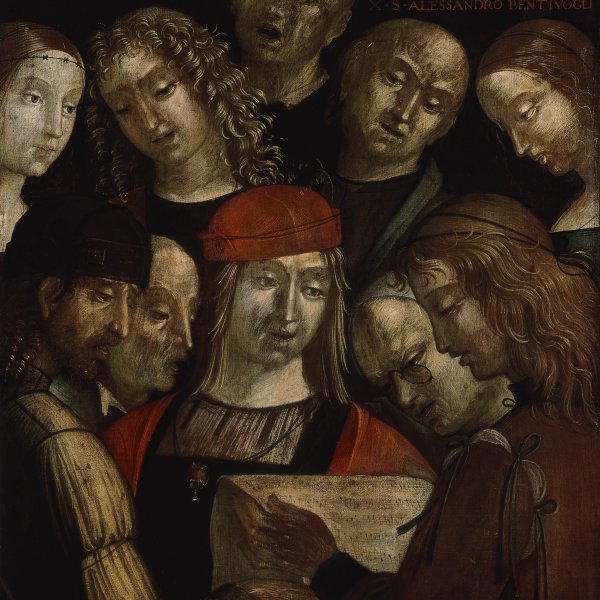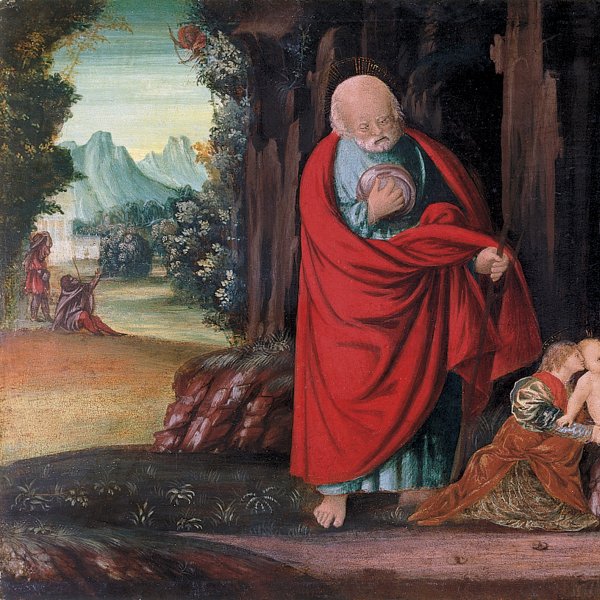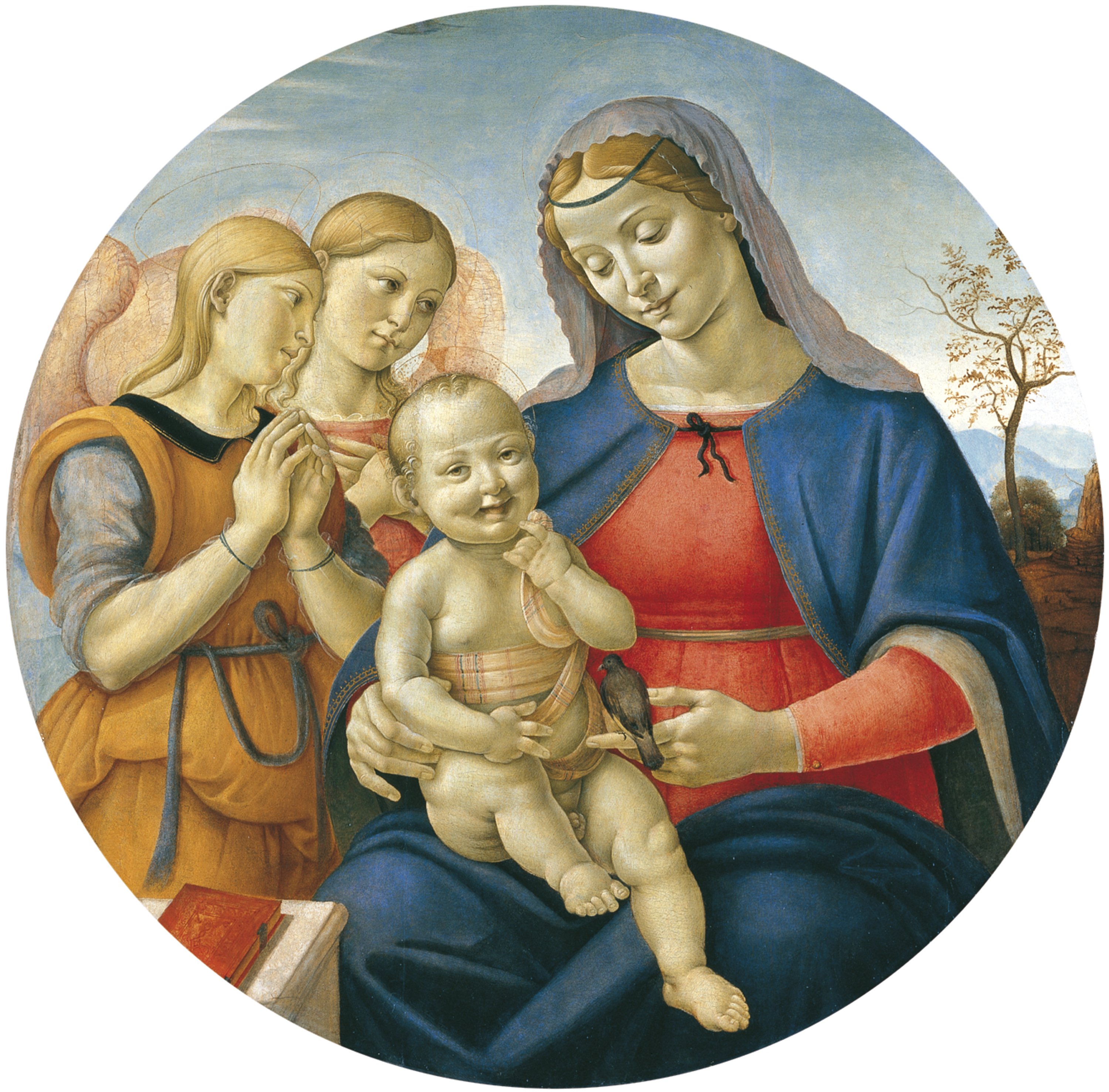The Virgin and Child with Angels
ca. 1500 - 1510
Oil and tempera on panel.
78 cm
Museo Nacional Thyssen-Bornemisza, Madrid
Inv. no.
320
(1933.5
)
Room 7
Level 2
Permanent Collection
Circular work attributed to Piero di Cosimo which offers us in perfect composition a traditional theme: The Virgin with the Child, with a landscape in the background and two angels that are contemplating him devoutly. Seeing this work we can understand the popularity of this artist, since, as well as the quality achieved in the treatment of volumes, fabrics and colouring, a special grace emerges from the image, marked by the interplay of looks and the sweet expression of the faces.
The Virgin and Child with Angels was in a private English collection, entering the Thyssen-Bornemisza collection in 1933 via the Sanct Lucas gallery in Vienna. The painting has been tentatively attributed to Piero di Cosimo in the catalogues of the Collection from 1937 onwards. However, when Federico Zeri studied the painting in 1962 he attributed it to an anonymous master whom he called the “Maestro Allegro”. He included the panel in a group of tondos of similar type which he associated with this new artist. According to Zeri the present composition derives from a painting by Piero di Cosimo of The Virgin and Child with Angelsof around 1505–10 in the Cini collection, Venice. In that work, which is vertical in format, the Virgin is seated and inclines her head gently towards the nude, plump Christ Child on her lap. As well as the two musical angels the composition includes a landscape that can barely be made out due to the large, volumetric figures that occupy the space. Zeri attempted to identify the Maestro Allegro as Jacopo di Domenico Foschi, father of Pier Francesco Foschi.
According to Zeri, the Maestro Allegro worked in a rather archaic style for this period, while his compositions generally have a humorous note expressed in the poses and expressions of the figures. Among the works that Zeri considered to be by this artist — in addition to the present one — are a Virgin and Child with the infant Saint John the Baptist in Arezzo, a Nativity in the Rijksmuseum, Amsterdam, and another Virgin and Child with the infant Saint John the Baptist in the Leger collection in London. Despite Zeri’s analysis, however, the present panel continues to be tentatively attributed to Piero di Cosimo in the catalogues of the Collection.
The composition uses a round or tondo format that was popular in the Renaissance and was used, for example, by Sandro Botticelli in his religious compositions. This Virgin, depicted with the Christ Child and adored by angels, has rested her book on a table in order to show the infant Christ a bird that perches on her index finger. Unconcerned with this new toy, the Christ Child looks cheerfully and slightly ironically at the viewer, raising a finger to his mouth. The central group is created with soft forms while the faces are finely and delicately drawn. The volumes are well balanced and the overall result is a sense of harmony and serenity in the composition. The traditional red and blue of Mary’s clothes are counterbalanced by the salmon pink and yellow of the angels’ tunics that stand out against their olive toned skins. This tondo has been dated to the first decade of the 16th century.
Mar Borobia
According to Zeri, the Maestro Allegro worked in a rather archaic style for this period, while his compositions generally have a humorous note expressed in the poses and expressions of the figures. Among the works that Zeri considered to be by this artist — in addition to the present one — are a Virgin and Child with the infant Saint John the Baptist in Arezzo, a Nativity in the Rijksmuseum, Amsterdam, and another Virgin and Child with the infant Saint John the Baptist in the Leger collection in London. Despite Zeri’s analysis, however, the present panel continues to be tentatively attributed to Piero di Cosimo in the catalogues of the Collection.
The composition uses a round or tondo format that was popular in the Renaissance and was used, for example, by Sandro Botticelli in his religious compositions. This Virgin, depicted with the Christ Child and adored by angels, has rested her book on a table in order to show the infant Christ a bird that perches on her index finger. Unconcerned with this new toy, the Christ Child looks cheerfully and slightly ironically at the viewer, raising a finger to his mouth. The central group is created with soft forms while the faces are finely and delicately drawn. The volumes are well balanced and the overall result is a sense of harmony and serenity in the composition. The traditional red and blue of Mary’s clothes are counterbalanced by the salmon pink and yellow of the angels’ tunics that stand out against their olive toned skins. This tondo has been dated to the first decade of the 16th century.
Mar Borobia





